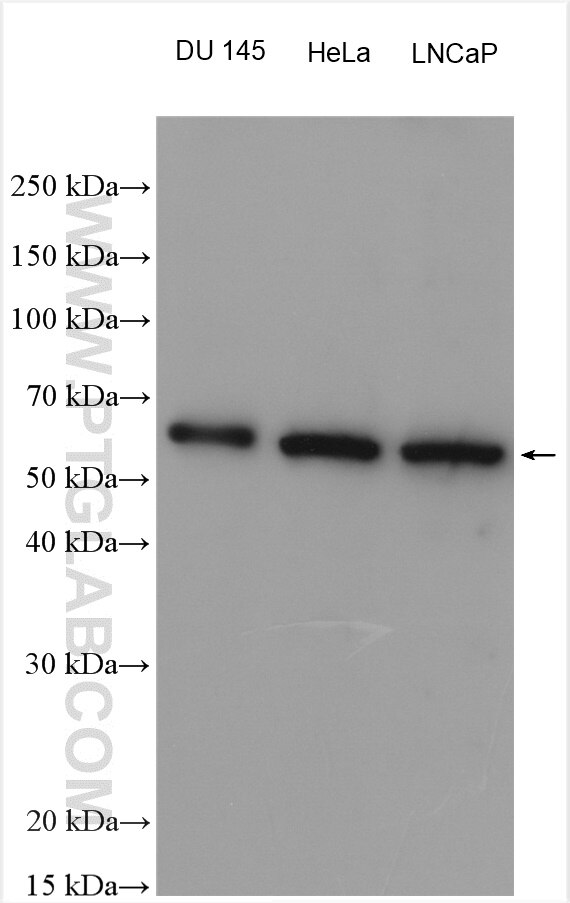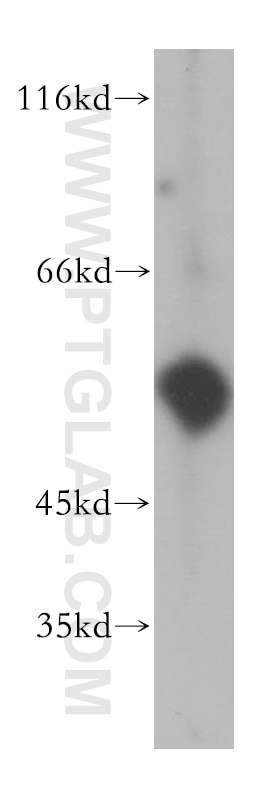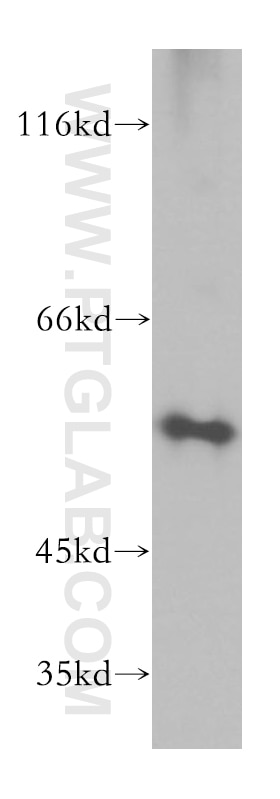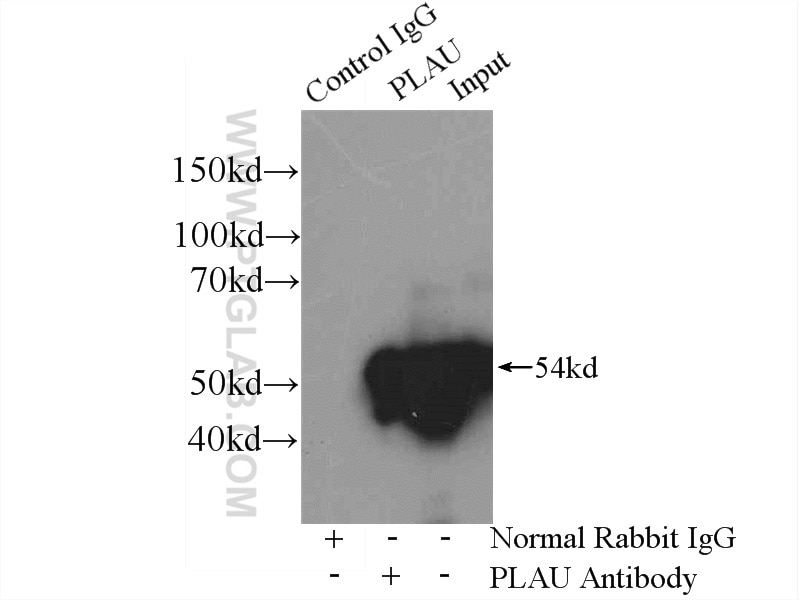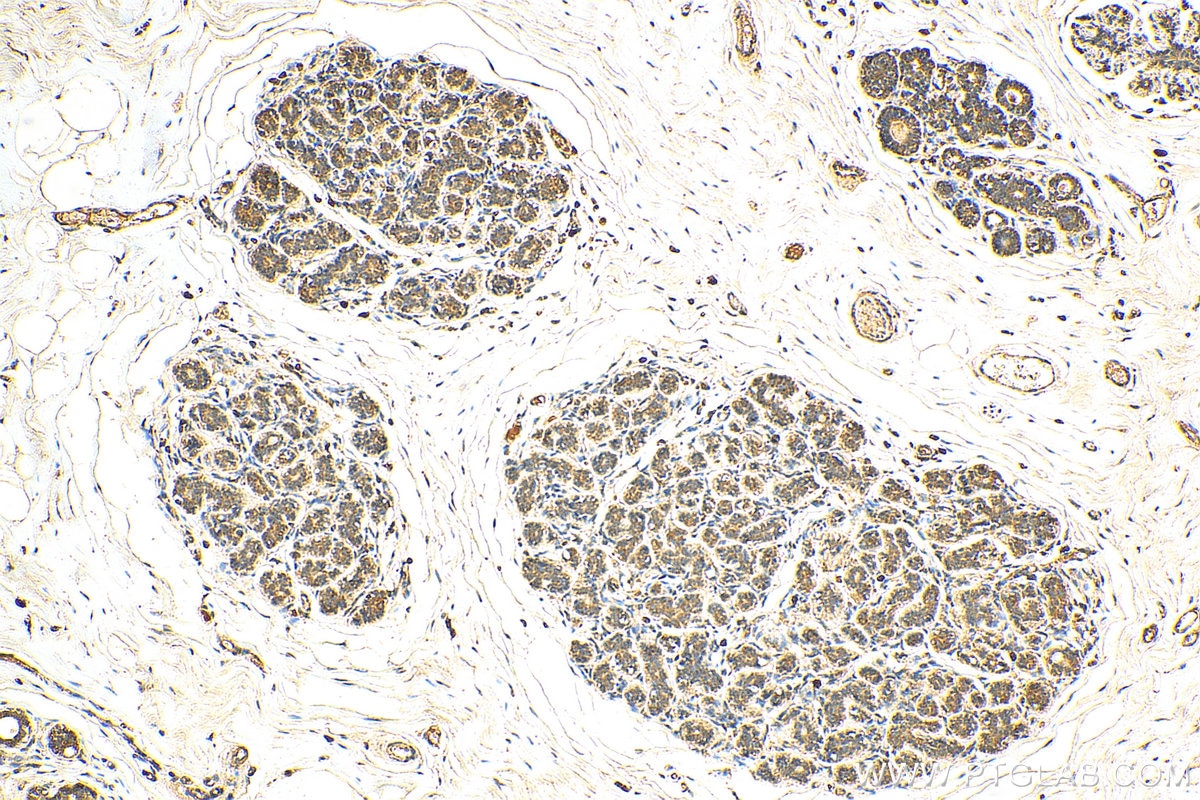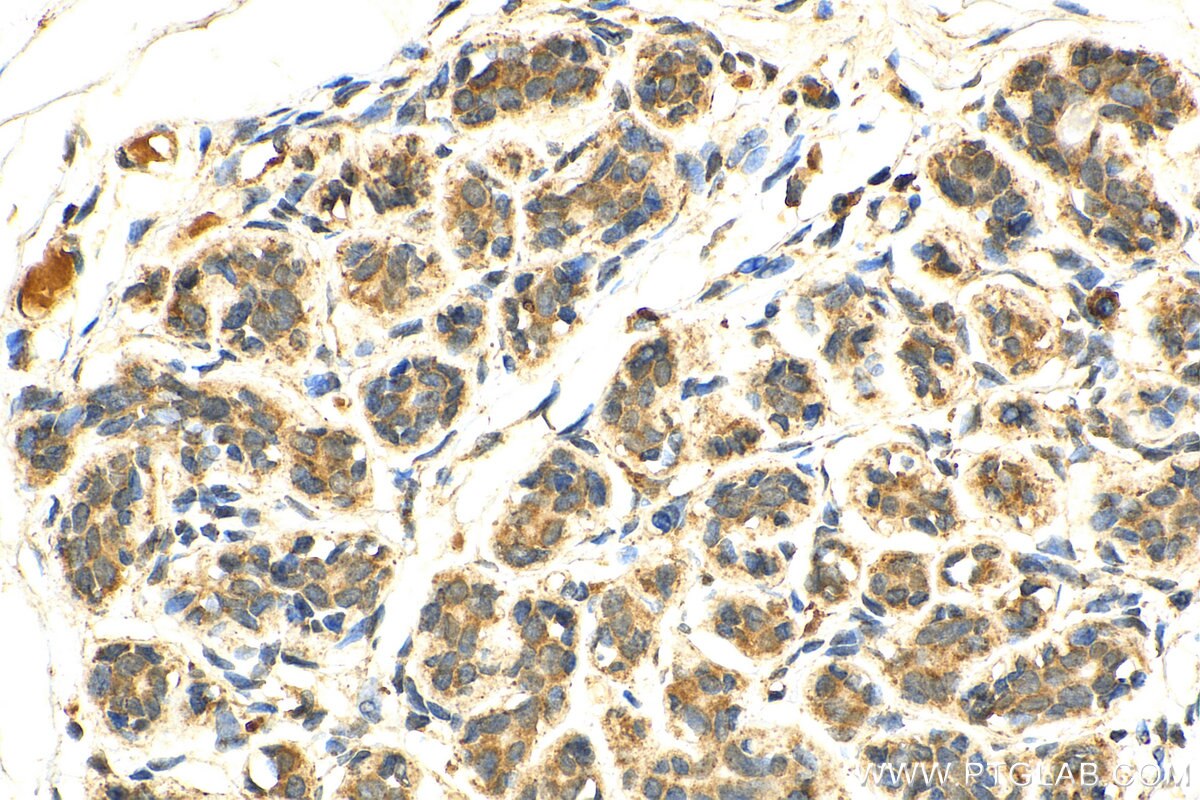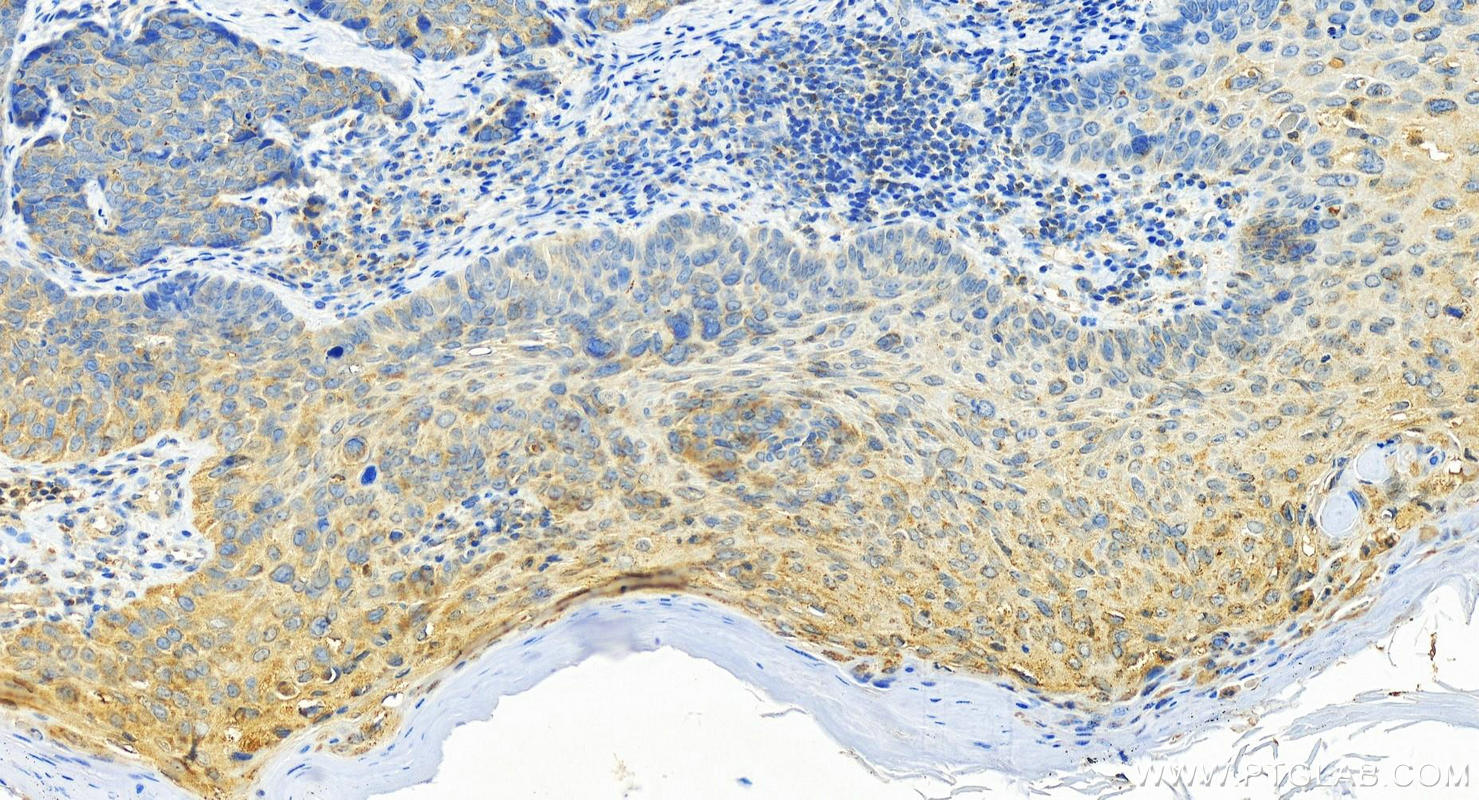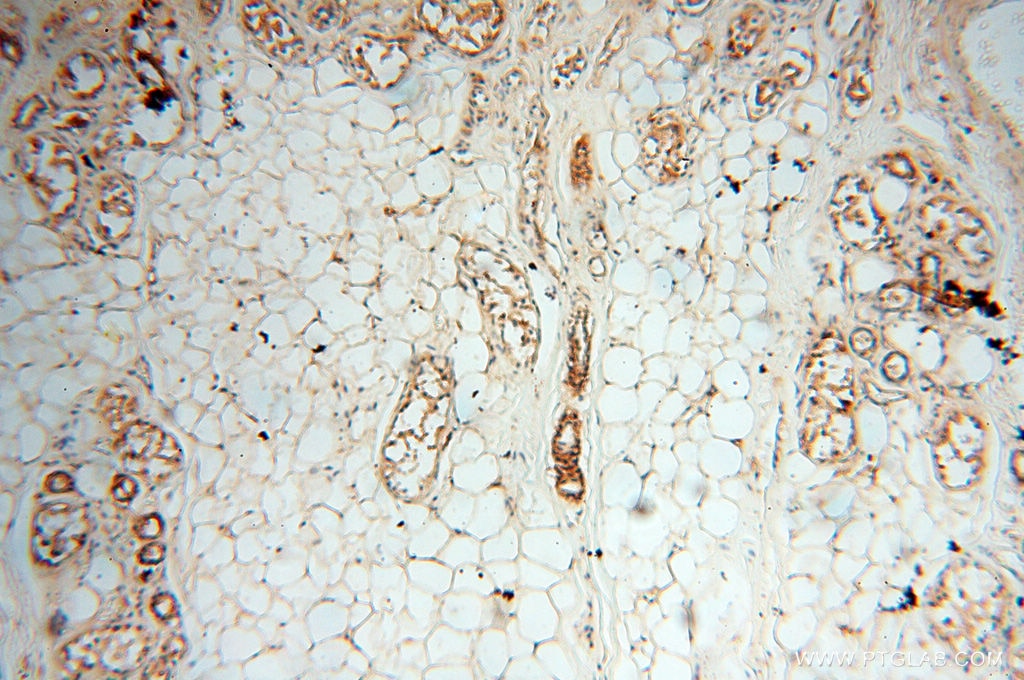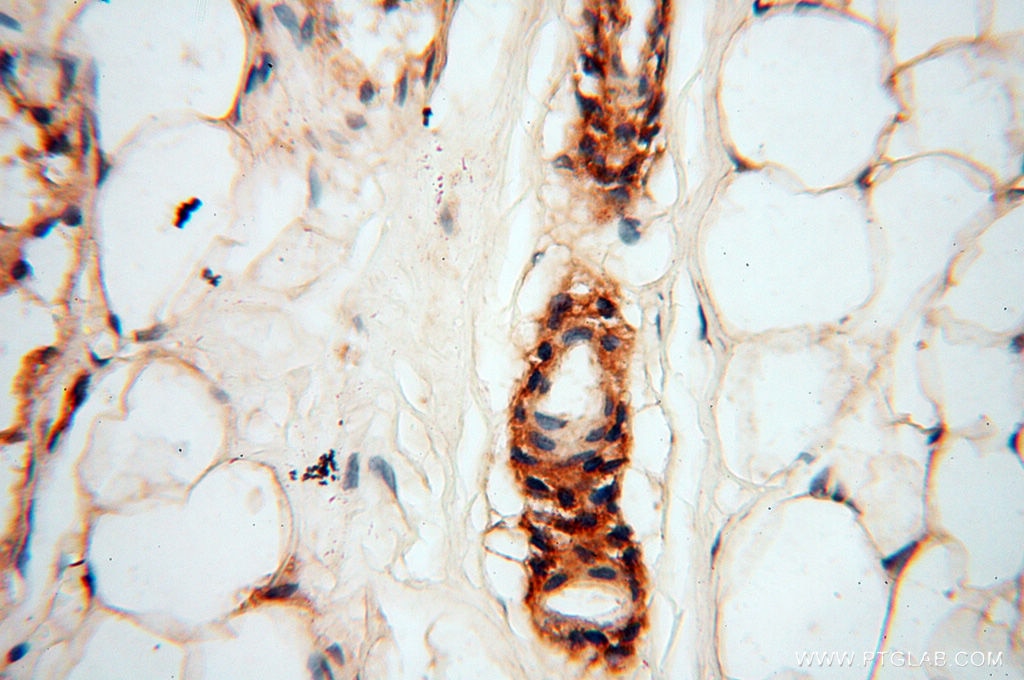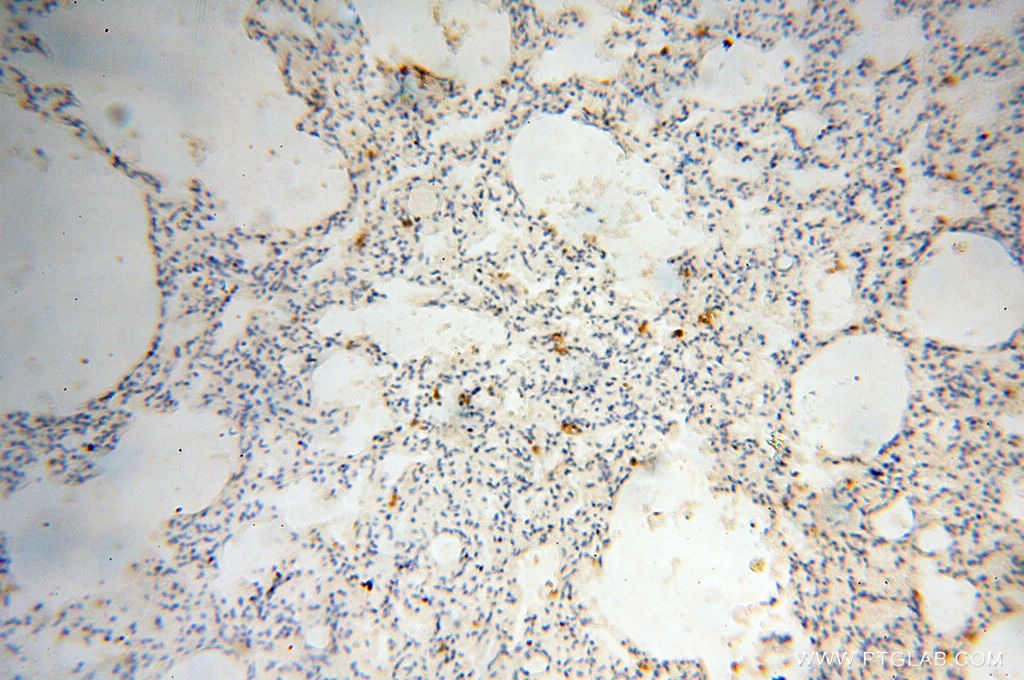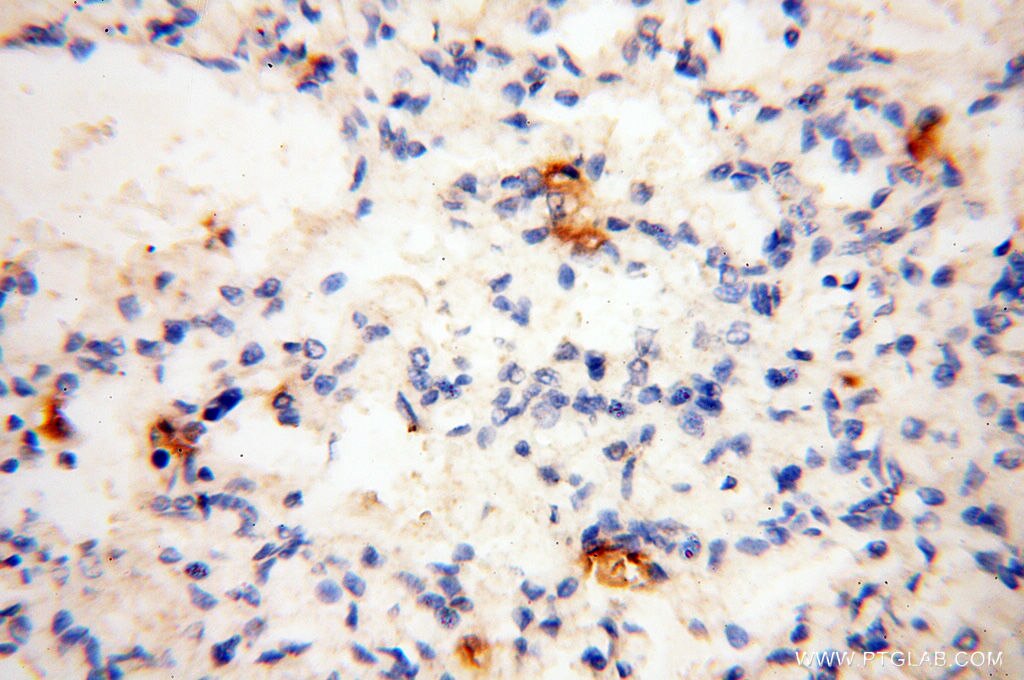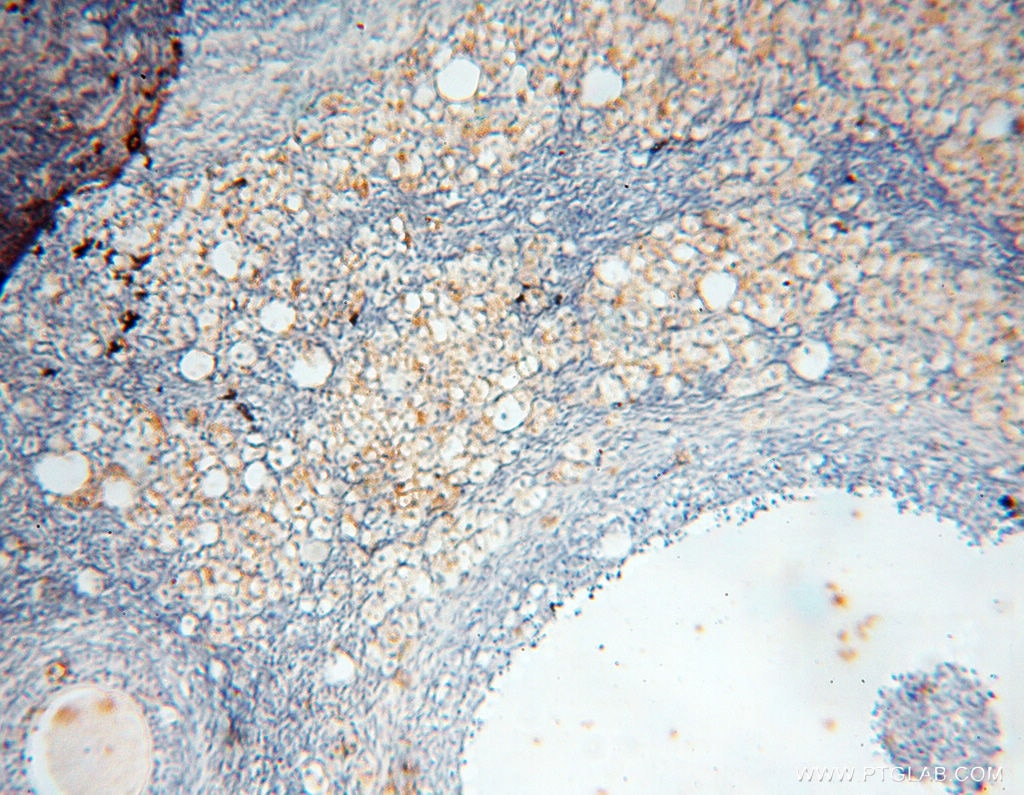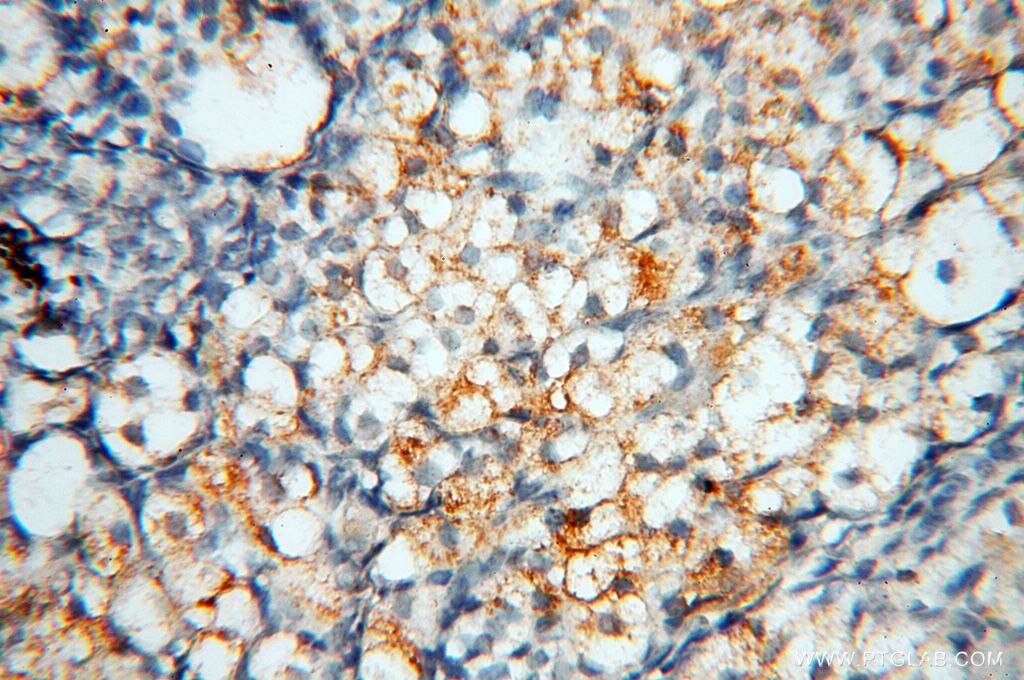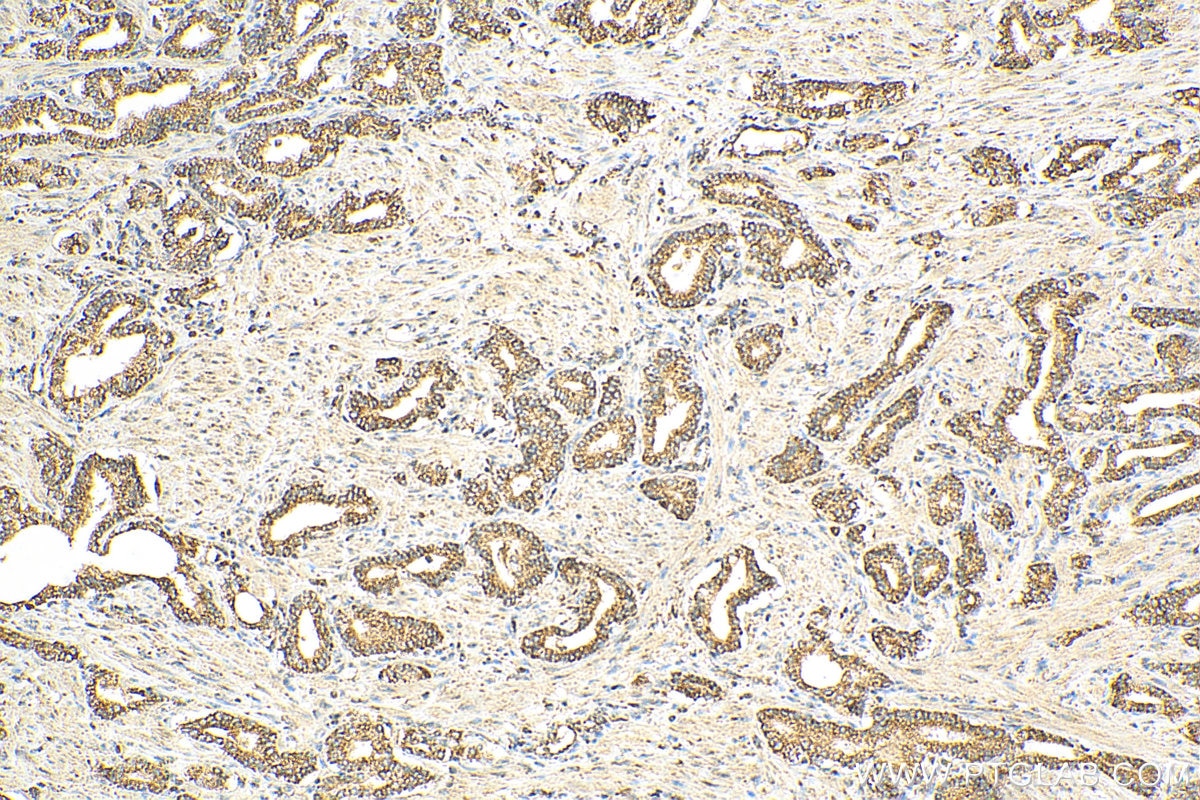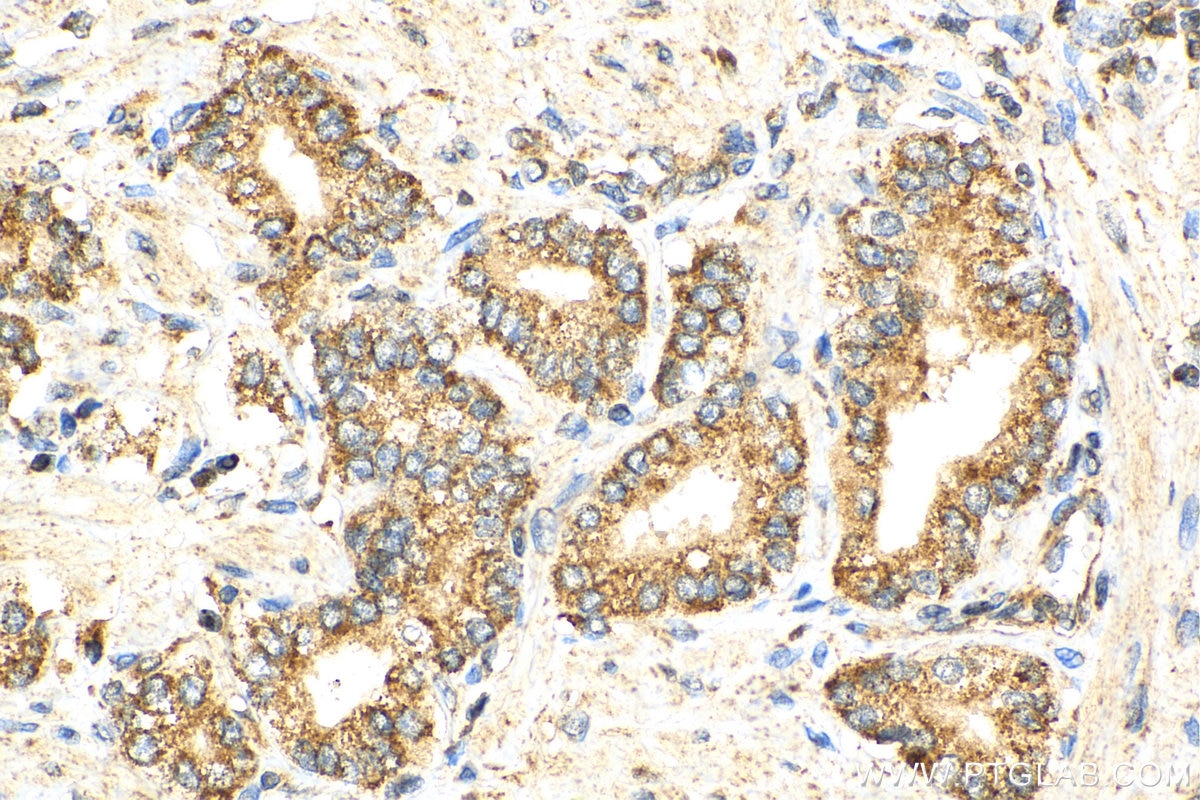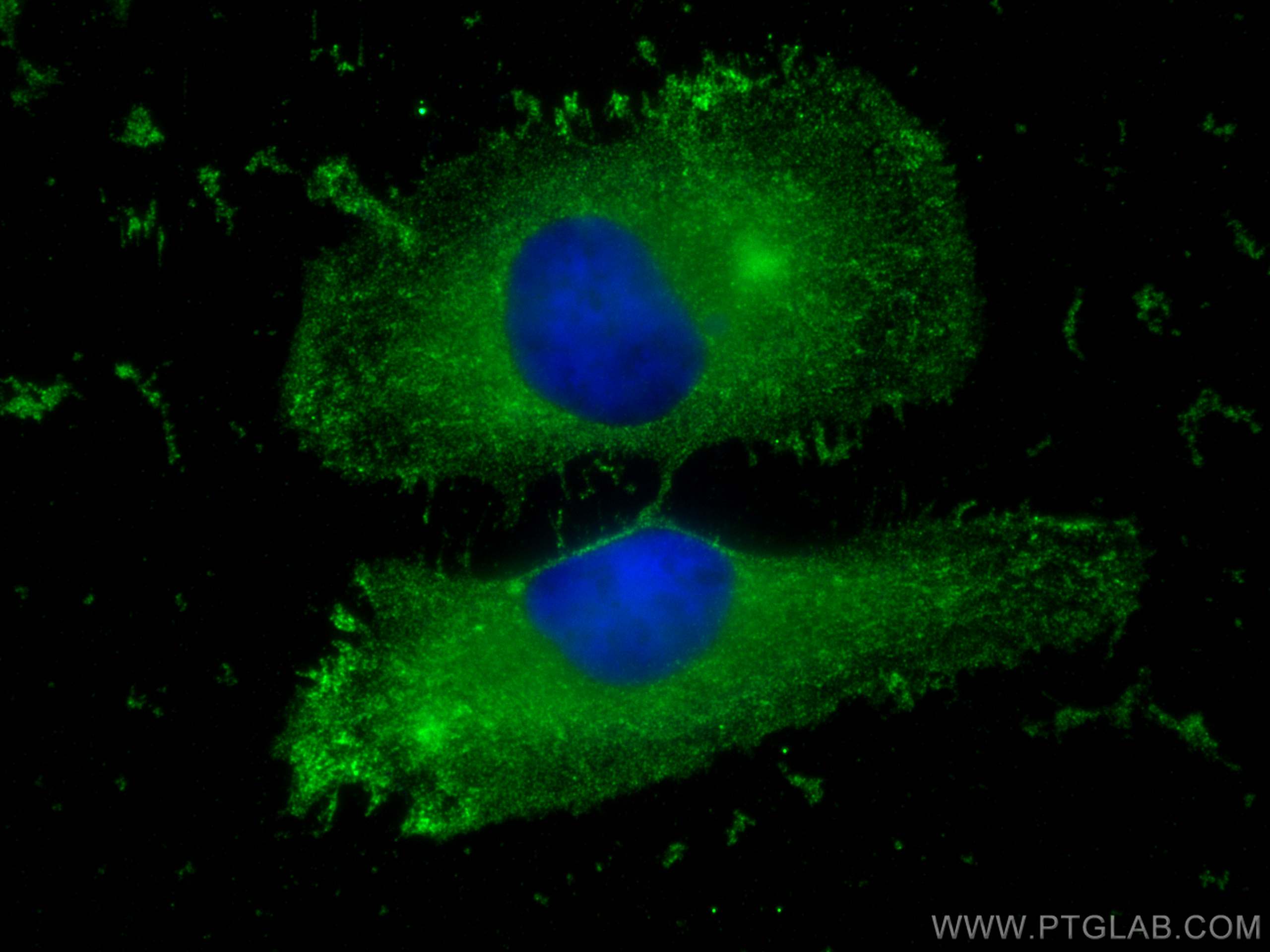- Phare
- Validé par KD/KO
Anticorps Polyclonal de lapin anti-uPA/Urokinase
uPA/Urokinase Polyclonal Antibody for WB, IHC, IF/ICC, IP, ELISA
Hôte / Isotype
Lapin / IgG
Réactivité testée
Humain, rat, souris et plus (1)
Applications
WB, IHC, IF/ICC, IP, CoIP, ELISA
Conjugaison
Non conjugué
N° de cat : 17968-1-AP
Synonymes
Galerie de données de validation
Applications testées
| Résultats positifs en WB | cellules DU 145, cellules A375, cellules HeLa, cellules LNCaP, tissu cérébral humain |
| Résultats positifs en IP | cellules HeLa |
| Résultats positifs en IHC | tissu de cancer du sein humain, tissu cutané humain, tissu de cancer de la prostate humain, tissu ovarien humain, tissu pulmonaire humain il est suggéré de démasquer l'antigène avec un tampon de TE buffer pH 9.0; (*) À défaut, 'le démasquage de l'antigène peut être 'effectué avec un tampon citrate pH 6,0. |
| Résultats positifs en IF/ICC | cellules HeLa, |
Dilution recommandée
| Application | Dilution |
|---|---|
| Western Blot (WB) | WB : 1:1000-1:8000 |
| Immunoprécipitation (IP) | IP : 0.5-4.0 ug for 1.0-3.0 mg of total protein lysate |
| Immunohistochimie (IHC) | IHC : 1:50-1:500 |
| Immunofluorescence (IF)/ICC | IF/ICC : 1:200-1:800 |
| It is recommended that this reagent should be titrated in each testing system to obtain optimal results. | |
| Sample-dependent, check data in validation data gallery | |
Applications publiées
| KD/KO | See 1 publications below |
| WB | See 38 publications below |
| IHC | See 12 publications below |
| IF | See 7 publications below |
| IP | See 1 publications below |
| CoIP | See 1 publications below |
Informations sur le produit
17968-1-AP cible uPA/Urokinase dans les applications de WB, IHC, IF/ICC, IP, CoIP, ELISA et montre une réactivité avec des échantillons Humain, rat, souris
| Réactivité | Humain, rat, souris |
| Réactivité citée | rat, bovin, Humain, souris |
| Hôte / Isotype | Lapin / IgG |
| Clonalité | Polyclonal |
| Type | Anticorps |
| Immunogène | uPA/Urokinase Protéine recombinante Ag11813 |
| Nom complet | plasminogen activator, urokinase |
| Masse moléculaire calculée | 431 aa, 49 kDa |
| Poids moléculaire observé | 54 kDa |
| Numéro d’acquisition GenBank | BC013575 |
| Symbole du gène | Urokinase |
| Identification du gène (NCBI) | 5328 |
| Conjugaison | Non conjugué |
| Forme | Liquide |
| Méthode de purification | Purification par affinité contre l'antigène |
| Tampon de stockage | PBS with 0.02% sodium azide and 50% glycerol |
| Conditions de stockage | Stocker à -20°C. Stable pendant un an après l'expédition. L'aliquotage n'est pas nécessaire pour le stockage à -20oC Les 20ul contiennent 0,1% de BSA. |
Informations générales
PLAU(Urokinase-type plasminogen activator) is also named as uPA and belongs to the peptidase S1 family.UPA initiates a proteolytic cascade, which degrades extracellular matrix during tissue growth and remodelling.The secreted proform of UPA is activated after binding to a specific high affinity cell surface receptor. Secreted UPA is exposed to rapid inactivation in the pericellular space by plasminogen activator inhibitor-1 (PAI-1), which is stored in the extracellular matrix bound to vitronectin(PMID:9665342).It has 2 isoforms produced by alternative splicing. Defects in PLAU are the cause of Quebec platelet disorder (QPD).
Protocole
| Product Specific Protocols | |
|---|---|
| WB protocol for uPA/Urokinase antibody 17968-1-AP | Download protocol |
| IHC protocol for uPA/Urokinase antibody 17968-1-AP | Download protocol |
| IF protocol for uPA/Urokinase antibody 17968-1-AP | Download protocol |
| IP protocol for uPA/Urokinase antibody 17968-1-AP | Download protocol |
| Standard Protocols | |
|---|---|
| Click here to view our Standard Protocols |
Publications
| Species | Application | Title |
|---|---|---|
Gastroenterology Inhibition of Plasmin Protects Against Colitis in Mice by Suppressing Matrix Metalloproteinase 9-mediated Cytokine Release From Myeloid Cells. | ||
J Exp Med PDGF-D activation by macrophage-derived uPA promotes AngII-induced cardiac remodeling in obese mice. | ||
Aging (Albany NY) Tertiary lymphoid structure stratifies glioma into three distinct tumor subtypes. | ||
Aging (Albany NY) NFAT5 directs hyperosmotic stress-induced fibrin deposition and macrophage infiltration via PAI-1 in endothelium. |
